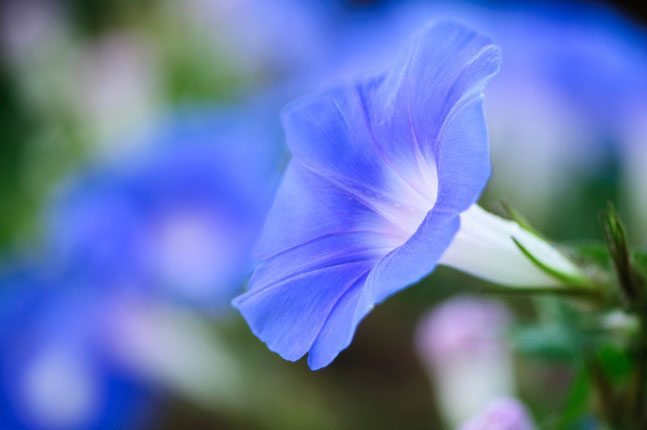
How to Grow Blue Enchantment Convolvuluses Indoors or Outdoors
Blue Enchantment Convolvuluses are beautiful dwarf morning glories that are indigenous to the Mediterranean. They love the sun and warm climates. Their deep blues and yellow centers draw in butterflies and hummingbirds galore. They do perfectly well in pots, in hanging baskets or in your flower bed. Whichever way you choose to display them, they are sure to add beauty and elegance. In the warmer climates of the U.S. such as southern California, the Blue Convolvulus is considered a perennial, but elsewhere they are generally used as annuals.
To grow them, you simply need a bright and sunny location. If you have clay-heavy or sandy soil, you can amend it with organic material. Seeds should be planted twelve to eighteen inches apart and can be placed directly into the ground. If you need to speed up germination, you can simply soak the seeds in warm water overnight and the casings will soften up. Thin the seedlings once they reach about two inches tall. Be sure to pinch off any weak ones and let only the strong ones mature.
To plant indoors…
- Fill a planting tray with potting soil.
- Water the soil before you plant, giving plenty of time for the excess water to drain. You want the soil to be moist for planting, not soggy.
- Plant a few seeds in each cell of your tray.
- Place the tray in a warm area with moderate sunlight.
- Cover the tray with clear plastic.
- Check on your tray often and make sure the soil stays moist. Use a spray bottle or a mist to water, being careful not to over-water.
To plant outdoors…
- Use a high-phosphorus fertilizer to help your convolvulus produce flowers.
- If you notice your plants getting leggy, cut back on the fertilizer. Removing any flowers that have faded will also help encourage new budding.
- Water them on a regular basis to keep the soil nice and moist. Drip irrigation can help to conserve water. A soaker hose can also save water and time.
Once you’ve planted and grown your blue enchantments, they can self-seed in your garden. Just ensure they get a good amount of sun and keep the soil moist. Take care in pruning, though, as these particular plants can become invasive if they are not properly maintained.